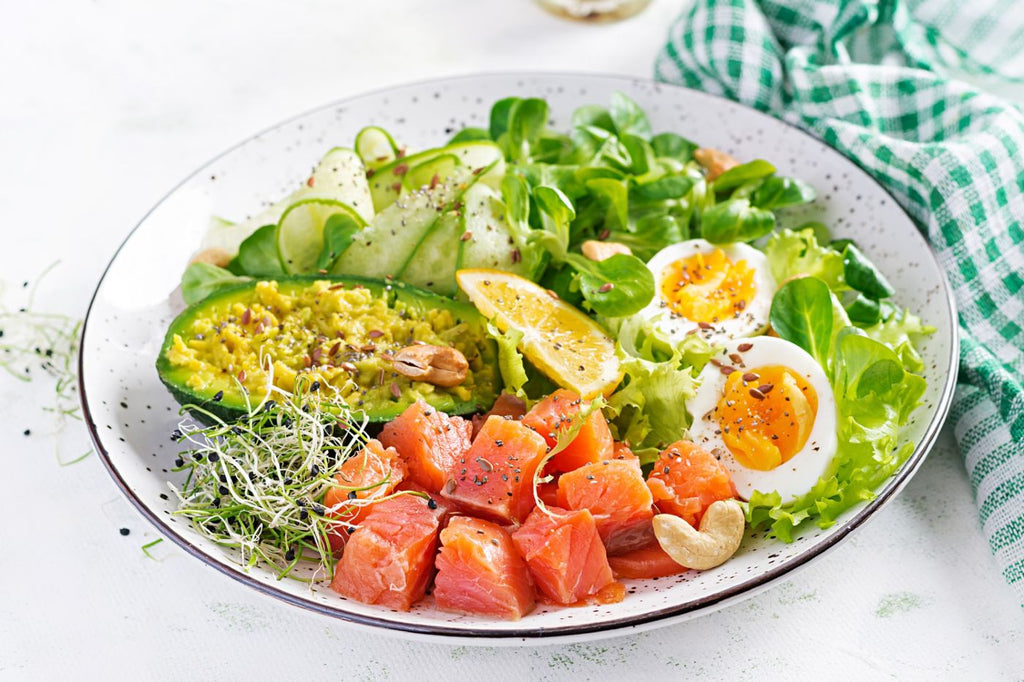What Is A Keto Diet?
A Keto diet is based on the principle of switching from the traditional method of using glucose as a primary source of energy (in the form of carbohydrates) to ketones (in the form of fats).
To achieve this you alter the amount of protein, carbohydrates and fats you eat so that the calories that come from each source conform to a specific ratio:
70-80% of daily calories from fat
10-20% from protein
5-10% from carbohydrates
When you eat carbs, your body breaks them down in to a form of useable energy called glucose. This is released in to the blood stream, helping to power the functions of your body and to regulate blood sugar. Glucose is also stored in your muscles, your liver and fat cells where it can be recalled for later use. It is the primary source of fuel for your brain.
What are Ketones?
When your body is running low on carbs, the liver begins to produce molecules called Ketones, which are used as an alternative fuel source. This usually happens after a long period of fasting, where the stored glucose in your muscles, liver and fat cells becomes depleted, or when you lower the amount of carbs in your diet to below 10% of your total calories.
The liver takes the fatty acids that you either have eaten, or already have stored in your body, and breaks them down to produce ketones. When the production of ketones is high enough that they become your primary fuel source, you are said to be in a state of ketosis.
That’s good right?
Because ketosis occurs when the body is burning fat for fuel, in theory it can result in increased fat loss. Burning fat does not always equate with losing body fat however, as you must be in an overall calorie deficit for this to occur.
In fact, if the amount of calories that you eat is higher than what you burn, you will continue to store fat irrespective of how much fat your are burning for energy. But assuming that you are following a well-balanced Keto diet, you might find your fat burning capabilities to be enhanced.
Where ketosis can really make an impact is in endurance training. Fat as a fuel source has a higher caloric value than carbohydrates – one gram of fat provides twice the amount of energy than one gram of carbs.
As most of us have an abundance of stored fat that can be converted in to energy more efficiently through ketosis, relying on ketones for energy may mean the ability to train for longer by nature of carrying more fuel in your tank.
Of course, endurance training also requires a body that is well hydrated with a healthy balance of electrolytes and enough energy present in your system to function.
Another key consideration is that ketones aren’t able to supply 100% of your energy needs, as some glucose is still required to keep your blood sugar levels in balance and support certain organs.
For explosive and high intensity exercise, the slower availability of ketones for energy may not be adequate for supplying all of your immediate energy needs.
If you enjoy high intensity training or are just finding that your low carb eating is causing you to feel a little underpowered during exercise, it might be wise to consider boosting your carb intake to give your body sufficient quick release energy.
So should I try Keto or not?
Achieving a state of ketosis is a variable process for each individual and isn’t necessarily the right option for everyone. That being said there are many people who have found a Keto diet to be a really effective weight loss and performance enhancing tool.
In order to eat according to the principles of Keto, fats must become your primary source of energy and carbohydrates kept to a minimum. Our low carb meals are a convenient way to create a base for a Keto diet, with an average of 6g net carbs per meal and high protein, helping you to get good quality nutrition while working in harmony with a state of ketosis.
All that you need to do is add your favourite source of fat and your Keto lunches and dinners are served!

